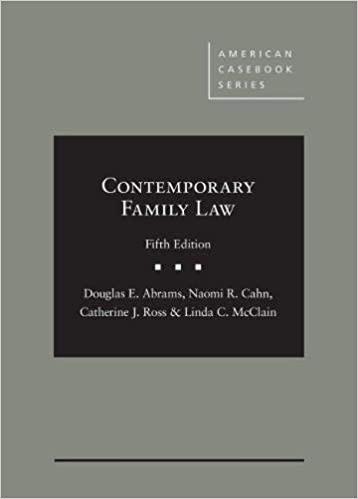Question
What are the problems (for the police, the prosecution, the defendant, or the jury) you would expect from the difference in penal code and jury
What are the problems (for the police, the prosecution, the defendant, or the jury) you would expect from the difference in penal code and jury instructions.
Below is the penal code and jury instructions.
Penal Code:The California Penal Code isthe primary set of statutes that define criminal offenses and criminal procedures in the state. These codes are the criteria from which police arrest suspects and prosecutors file cases.
Jury Instructions: Either before or after the closing arguments by the lawyers, the judge will explain the law that applies to the case to you. This is the judge's instruction to the jury. You have to apply that law to the facts, as you have heard them, in arriving at your verdict.
Example Robbery 211 PC
Penal Code
Robbery isthe felonious taking of personal property in the possession of another, from his person or immediate presence, and against his will, accomplished by means of force or fear.
Jury Instructions:
The defendant is charged [in Count] with robbery [in violation of
Penal Code section 211].
To prove that the defendant is guilty of this crime, the People must
prove that:
1. The defendant took property that was not (his/her) own;
2. The property was in the possession of another person;
3. The property was taken from the other person or (his/her)
immediate presence;
4. The property was taken against that person's will;
5. The defendant used force or fear to take the property or to
prevent the person from resisting;
AND
6. When the defendant used force or fear, (he/she) intended (to deprive the owner of the property permanently/ [or] to remove the property from the owner's possession for so extended a period of time that the owner would be deprived of a major
portion of the value or enjoyment of the property). The defendant's intent to take the property must have been formed before or during the time (he/she) used force or fear. If the defendant
did not form this required intent until after using the force or fear, then (he/she) did not commit robbery.
Step by Step Solution
There are 3 Steps involved in it
Step: 1

Get Instant Access to Expert-Tailored Solutions
See step-by-step solutions with expert insights and AI powered tools for academic success
Step: 2

Step: 3

Ace Your Homework with AI
Get the answers you need in no time with our AI-driven, step-by-step assistance
Get Started


